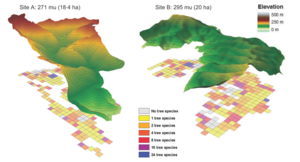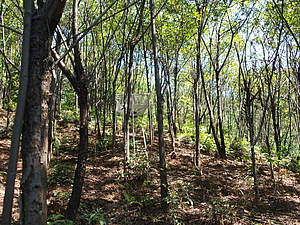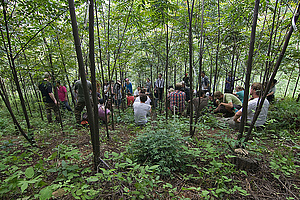BEF-China
Biodiversity–Ecosystem Functioning (BEF) experiments address ecosystem-level consequences of species loss by comparing communities of high species richness with communities from which species have been gradually eliminated. While most BEF experiments worked with laboratory microcosms or in grasslands, the new research frontier is to manipulate tree diversity, with BEF-China being the largest of these experiments worldwide. BEF-China has been established as result of the former DFG Research Unit 891, funded by the German Research Foundation (DFG FOR 891/1-3), with additional funds from the National Natural Science Foundation of China (NSFC) and the Swiss National Science Foundation (SNSF).
Design of the experiment
- Two sites (A and B)
- 40 native broad-leaved tree species, 18 shrub species, two commercial coniferous plantation species for monoculture comparisons (Cunninghamia lanceolata & Pinus massoniana).
- Six sets of 16 tree species each (set 1, 2 and 3 each at site A and B), with six levels of tree species richness (0, 1, 2, 4, 8, 16 species)
- Shrub diversity as a split-plot factor with four diversity levels (0, 2, 4, 8 species)
- Random & non-random extinction scenarios
Establishment of the experiment
- Planting 2009 (site A), 2010 (site B)
- Plot size 1 mu (25.81 x 25.81 m), 400 trees per mu (6000 per ha), planting distance 1.29 m
- Random allocation of treatments to plots, random position of trees within plots
- Annual measurements of dbh, height and many further functions
- Assessment of ‘ecoscape‘ variables




